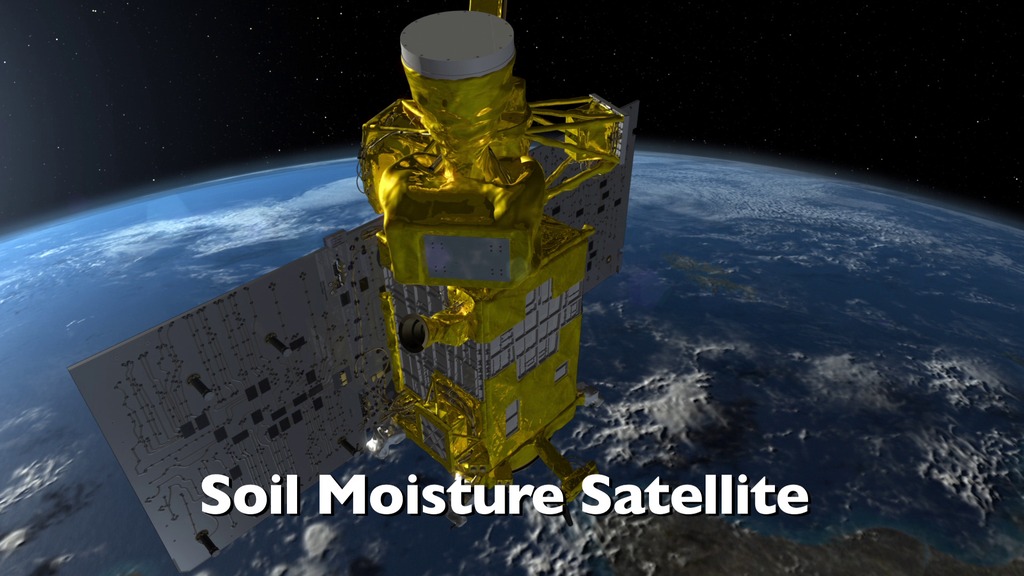SMAP Radiometer versus Radio Frequency Interference
The microwave radiometer on NASA's SMAP mission was designed and built at Goddard Space Flight Center to avoid unwanted radio frequency interference. Instrument Scientist Jeff Piepmeier explains how and why.
For complete transcript, click here.
Watch this video on the NASA Goddard YouTube channel.
The microwave radiometer on NASA's Soil Moisture Active Passive (SMAP) satellite was designed and built at NASA's Goddard Space Flight Center. Along with the microwave radar, data from the radiometer will be used to calculate the water content of Earth's soil.
All types of soil emit microwave radiation, but the amount of water changes how much of this energy is emitted. The drier the soil, the more microwave energy; the wetter the soil, the less energy.
But radio frequency interference is a problem, even though the instrument is passively listening in a region of the microwave spectrum where transmission is prohibited. Some of the signals from the surrounding regions leak into the protected "listen-only" band. Goddard engineers developed new hardware and software to search for and cut out the erroneous measurements.
For More Information
See NASA.gov
Credits
Please give credit for this item to:
NASA's Goddard Space Flight Center
-
Scientist
- Jeff Piepmeier (NASA/GSFC)
-
Producer
- Matthew R. Radcliff (USRA)
-
Video editor
- Matthew R. Radcliff (USRA)
-
Animator
- Brian Monroe (USRA)
-
Writer
- Kate Ramsayer (Telophase)
-
Videographers
- Rob Andreoli (Advocates in Manpower Management, Inc.)
- John Caldwell (Advocates in Manpower Management, Inc.)
-
Narrator
- Swarupa Nune (InuTeq)
Release date
This page was originally published on Tuesday, January 27, 2015.
This page was last updated on Wednesday, May 3, 2023 at 1:50 PM EDT.
Series
This page can be found in the following series:Tapes
The media on this page originally appeared on the following tapes:-
SMAP Radiometer
(ID: 2015009)
Wednesday, January 28, 2015 at 5:00AM
Produced by - Walt Feimer (HTSI)
